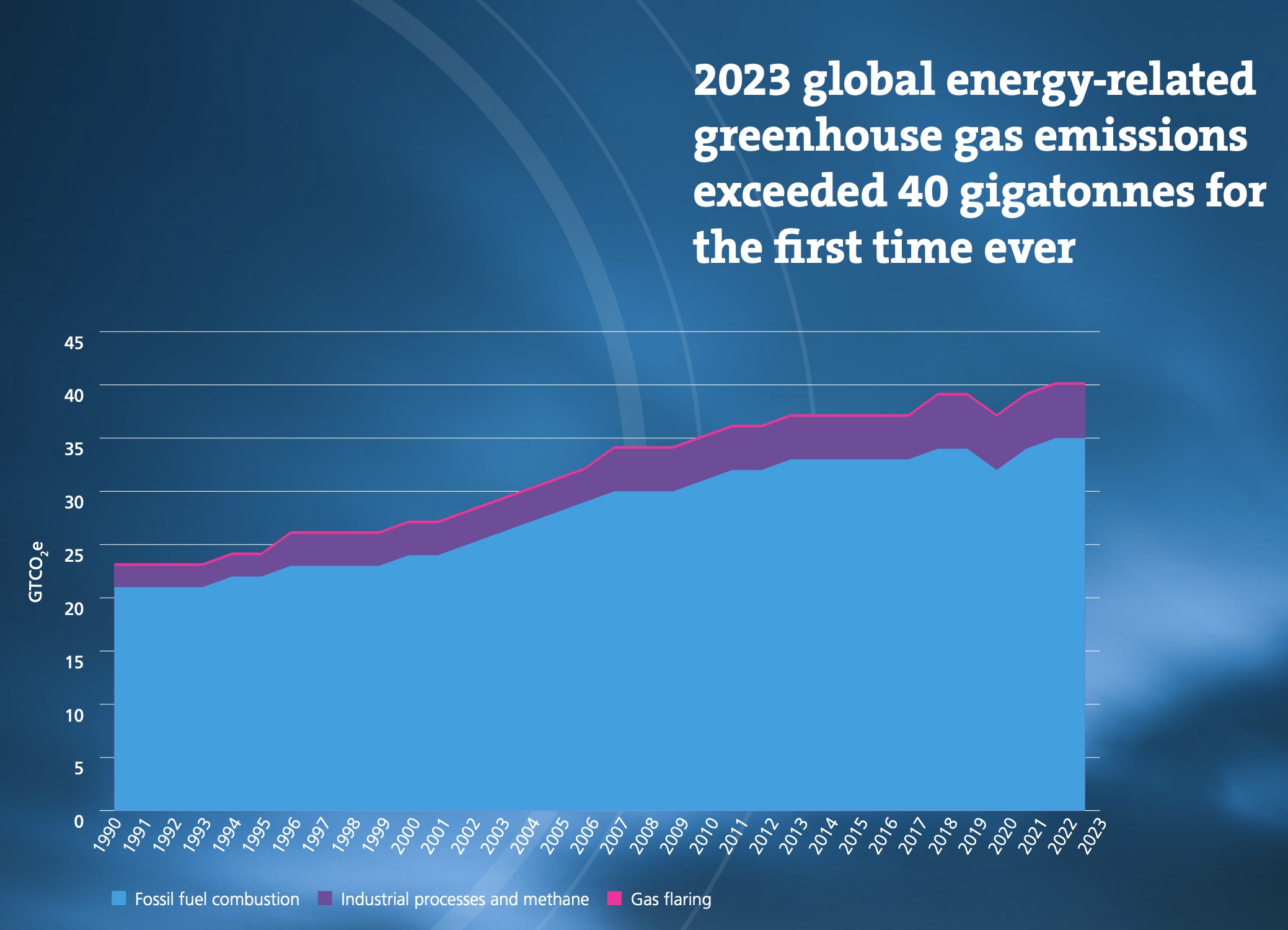
Renewables (hydro excluded) reached record levels for electricity generation, hitting 4,748 terawatt hours. (Source: Shutterstock)
Long story short: the world has not made enough progress on the transition to lower-carbon energy as its growing appetite for energy remains filled mostly by fossil fuels.
That is according to the latest Statistical Review of World Energy report, which was released June 20 based on energy data gathered last year.
“At the global level, today’s new data provides little encouragement in terms of global climate change mitigation,” said Nick Wayth, CEO of the Energy Institute, which co-authored the report with KPMG and Kearney. “Clean energy is still not even meeting in entirety of demand growth and therefore at a global level, not displacing any fossil. Arguably, the transition has not even started.”
Fossil fuel use rose globally, despite increased use of renewables and other lower-carbon energy resources. It casts concern on the pace of emissions reductions efforts and the world’s ability to meet Paris Agreement climate targets to limit global warming from rising more than 1.5 C above pre-industrial levels by 2050.
The data showed global energy consumption increased 2% to a record 620 exajoules (EJ), driven by increases in coal and oil use. That, in turn, pushed energy-related emissions up 2% to surpass 40 gigatonnes of CO2 for the first time. Fossil fuel consumption hit a record 505 EJ in 2023, up 1.5%. Coal and oil use were up by 1.6% and 2%, respectively, but consumption of natural gas—considered a transition fuel—was flat.
Renewables (hydro excluded) reached record levels for electricity generation, hitting 4,748 terawatt hours. Solar and wind accounted for nearly three-quarters of all net additional electricity generated, according to the report.
Solar and wind capacity in 2023 beat the previous year’s record of 276 GW by around 186 GW, a 67% increase.
However, renewables’ share of primary energy use was only 8%, representing an increase of 0.4% over the previous year. The share was about 18% if hydro and nuclear are added.
Fossil fuels’ share of the energy mix dropped 0.4% to nearly 82%. Its use in different regions varied.
Growing primary energy consumption and emissions followed a full year of the Ukraine conflict on top of more conflict in the Middle East, as well as the first full year without COVID-19 restrictions.
“There [was] an 18-month period during COVID when it looked like the world might be on the right trajectory for Paris, but sadly, we’ve rebounded and got straight back on the horse in terms of the pre-COVID trends, pretty much,” said Simon Virley, vice chair and head of energy and natural resources for KPMG in the U.K. Since the first Conference of the Parties (COP) in Berlin nearly 30 years ago, fossil fuels’ share of the global energy mix has dropped from about 86% to 81.5% today. “That’s 30 years of efforts, despite all the growth in renewables,” he said.
However, on a positive note, he pointed out China added more renewables than the rest of the world combined. China, which also saw fossil fuel use increase to a record high, added 55% of all renewable generation additions in 2023.
“If China can do it at the scale they’re going to do it at, then costs should continue to come down and that should hopefully help with the deployment of renewables and other low carbon technologies around the world,” he said.
The report also showed that growth economics continued to struggle to use less fossil fuels. In India, for example, fossil fuel consumption was up 8%. In Africa, however, primary energy consumption fell by 0.5% with electricity consumption flat.
“The IEA recently estimated developing economies outside China account for only 15% of the global clean energy investment pipeline,” Wayth said, noting the high cost of capital is holding back the development of new projects. “When I travel to Africa, people often say we can’t decarbonize until we carbonize. Sadly, at the moment it seems that Africa can neither carbonize nor decarbonize.”
In the U.S., where focus is high today on electrification, the report showed electricity demand fell last year. It also fell in Europe.
“The wave of EVs, heat pumps and new data centers has yet to catch up, with overall improvements in energy efficiency. … But we may be nearing an inflection point,” Wayth said. Analysis shows “data center electricity consumption could triple by 2030, reaching 3% to 4.5% of global energy consumption. Extrapolating the five-year growth rate of renewables out to 2030, this means data centers could absorb up to one-sixth of new renewable capacity. Of course, in reality, this will be far more localized where data centers are likely to be built near where power is cheap, clean and abundant.”

Recommended Reading
Comments
Add new comment
This conversation is moderated according to Hart Energy community rules. Please read the rules before joining the discussion. If you’re experiencing any technical problems, please contact our customer care team.

